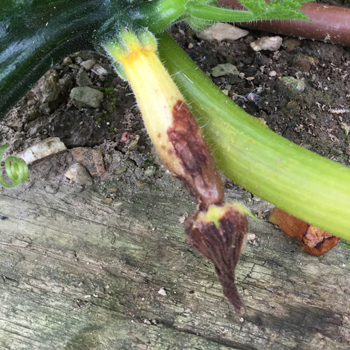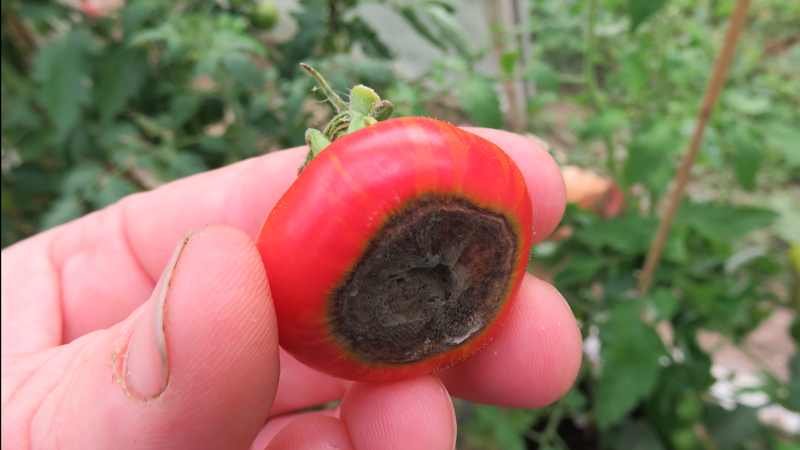If your veggies start to rot at the blossom (flower) end, like this tomato pictured, then please don’t panic. You may have lost that particular fruit, but you can save subsequent fruits…
Blossom End Rot can affect tomatoes, courgettes, squashes, aubergines and peppers. Essentially, it is a calcium deficiency that manifests in rotting of the end of the fruit that is attached the flower (hence the name).
 You may have seen this on tomatoes, where the bottom of the tomato turns black and mushy. Or you may have seen it on courgettes, or other squashes, where the end of the fruits turn brown and quickly rot. It’s quite a frustrating problem in the veg patch as everything seems to be going so well – you see the baby fruits forming and beginning to ripen and then the next day they’re a gonna.
You may have seen this on tomatoes, where the bottom of the tomato turns black and mushy. Or you may have seen it on courgettes, or other squashes, where the end of the fruits turn brown and quickly rot. It’s quite a frustrating problem in the veg patch as everything seems to be going so well – you see the baby fruits forming and beginning to ripen and then the next day they’re a gonna.
So, what’s the cause? Well, the main thing to remember is that it is due to calcium deficiency and more often than not it’s because the plant simply hasn’t been able to absorb calcium from the soil because of a lack of moisture in the soil. So you may see blossom end rot cropping up in the greenhouse if you’d forgotten to water your tomatoes or out in the veg patch if there had been a particularly hot spell and plants had only received a very shallow watering.
As a general rule, most soil has adequate calcium levels, so it’s more effective to make sure plants get enough water so that they can extract the calcium through their roots rather than trying to add extra calcium to the soil. Follow these tips and you should have better looking fruits next time!
- Keep soil consistently moist but not waterlogged.
- In hot weather, be sure to give plants a deep watering so that the water penetrates down into the soil rather than staying at surface level where it will quickly evaporate again.
- Don’t be lulled into a false sense of security – once fruits start to form it’s easy to assume they’ll be fine, but this is when they need the calcium most.
- Add a mulch around the base of aubergines, tomatoes, peppers and squashes to help maintain moisture.
- One affected fruit doesn’t mean the whole crop will be ruined – just make sure you change the way you water the plants as soon as you spot it as the younger, undeveloped fruits still have a chance!

